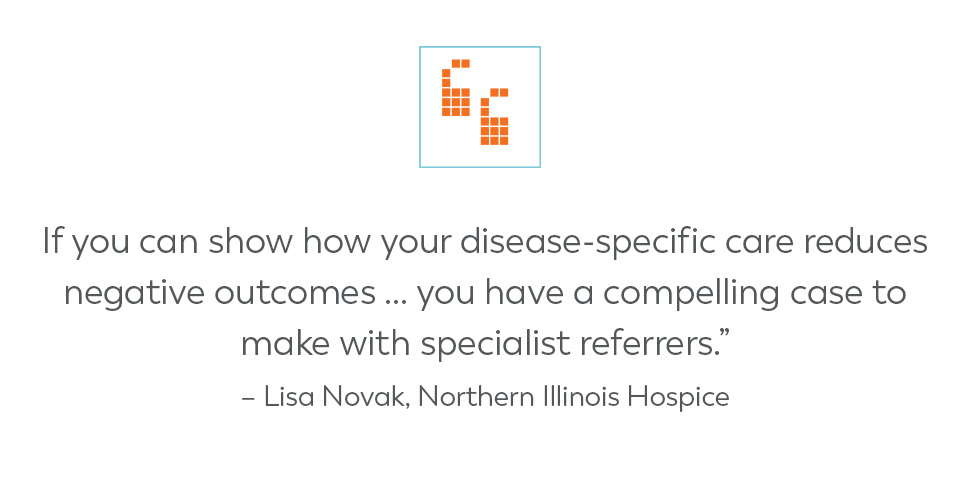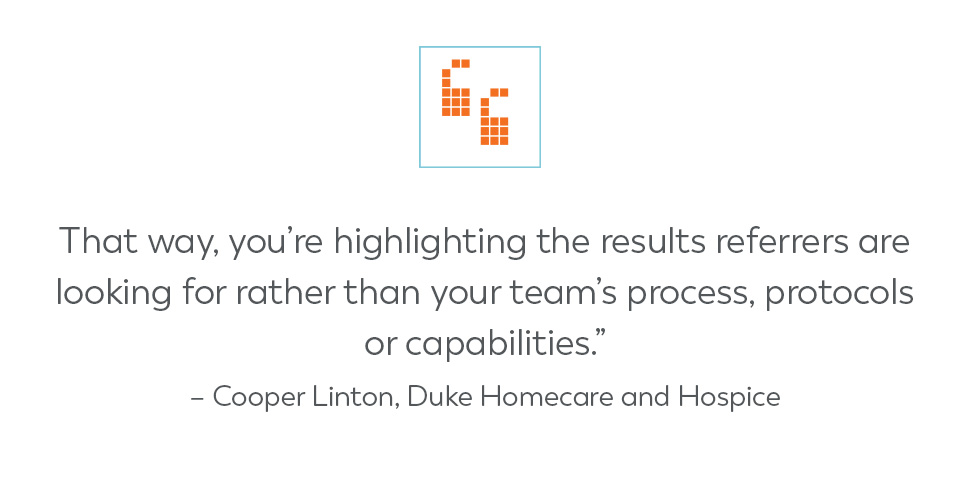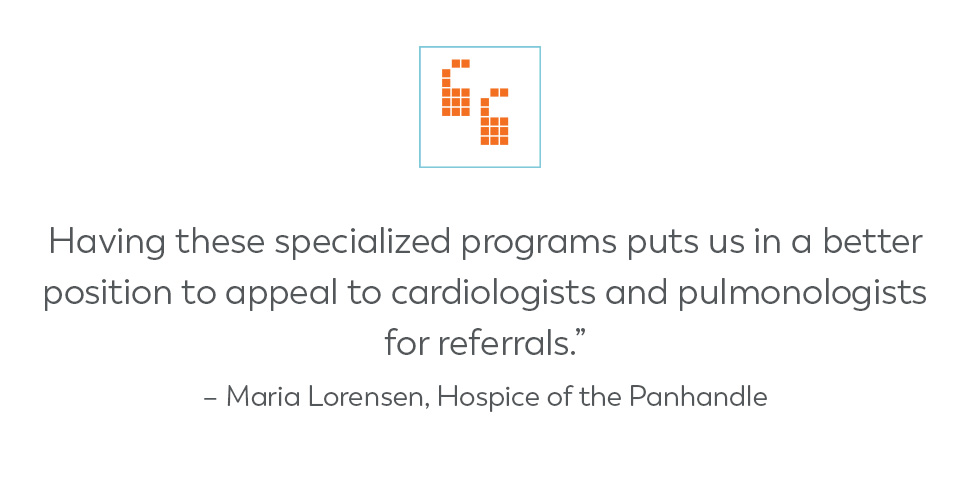Gain Referrals Through Featuring Specialties by Disease State
We live in a specialized world. We’re not just computer users, we’ve become proficient in either PC or Mac. We may enjoy the eclectic menu of an all-American diner, but we pay premium prices at a restaurant that does a deep dive into only sushi.
In healthcare, specialists reign. According to studies, more than a third of patients in the United States are referred to a specialist each year. Among the elderly, an average of two referrals to specialists are made per person per year. And specialist visits comprise more than half of outpatient physician visits in America.
For their areas of expertise, specialists are more likely than primary care physicians to provide evidence-based care, and several studies have shown that specialists’ co-management of care with PCPs results in better health outcomes for patients with chronic diseases. It’s no surprise that the 2020 Medscape Physician Compensation Report stated that PCPs claimed an average annual compensation of $243,000, while specialists averaged $346,000.
Physicians typically specialize in particular diseases rather than processes. Other physicians have a propensity to refer according to their patients’ specific diseases. So how can your agency capitalize on this entrenched referral behavior?
I talked with three leaders of home-based care agencies for their insights on developing and promoting specialties by disease state. Here are their sage observations and advice.

Pinpoint the gaps in your service area
Lisa Novak
CEO
Northern Illinois Hospice (Rockford, IL)
“Sometimes, hospice clinicians can push back on the idea of marketing themselves as specialists in different disease states,” Lisa said. “Instead, they may see themselves as specialists in, say, pain and symptom management, regardless of the specific disease. Yet our medical referrers and even consumers have been trained to prefer the most relevant specialists for their exact needs – everyone wants to work with experts. So if my mom or my patient has COPD, a preference exists for clinicians who really know that disease. And the difference for managing the related pain and symptoms is in the details.
“You don’t have to – and shouldn’t – tackle all specialties at the same time. See where gaps for disease-specific resources exist in your community and think about how you may be able to fill those gaps. For example, in our region, a center to help ALS patients and families recently closed. By promoting our experience with ALS patients, we are looking for opportunities to better serve that population. When you focus on a specific disease, local chapters of disease associations or affiliations also may be more willing to reference your organization as a resource.

“Another important factor is mining and packaging data by disease state to prove your organization’s effectiveness. If you can show how your disease-specific care reduces negative outcomes, such as ER visits and hospital readmissions, while improving things like patient and family satisfaction scores, you have a compelling case to make with specialist referrers.
“And having evidence-based case studies are important for arming your liaisons to get in the door with referring specialists. In our market, we’re finding that many physicians we had long-term relationships with are retiring, and the younger physicians taking their places need a reason to even talk with us. Nothing can get their attention better and faster than compelling data related to their specialty.
“On a related note, it’s also vital to collaborate with referring specialists and discover how they prefer that you report back to them about their patients’ outcomes. By sharing positive outcomes data in the method and cadence they prefer, you’re building the relationship to get their next referral.”

Feature positive outcomes rather than your process
Cooper Linton
Associate Vice President
Duke HomeCare & Hospice (Durham, NC)
“Another approach to disease-specific specialties, building on one point that Lisa made, is to focus on specific outcomes referrers are aiming to achieve for patients with that disease,” Cooper said. “That way, you’re highlighting the results referrers are looking for rather than your team’s process, protocols or capabilities.
“So whether it’s a clinical target, such as keeping a COPD patient’s O2 saturation at a certain level, or an outcomes target, such as reducing or eliminating a hospital readmission, you can collect and present data that shows your team’s success at fulfilling those goals for a patient with a specific disease. Outcomes definitely drive referrals more than process.

“Focusing by disease state also can help members of your clinical team become highly specialized. At Duke HomeCare & Hospice, infusion is a major part of our care mix. We have pharmacists who specialize not only in infusion, but in total parenteral nutrition infusion, chemo infusion or even specific types of chemo infusion. That level of expertise helps provide great confidence from physicians and families alike in referring to us.
“Technology, especially remote patient monitoring, continues to play a growing role in helping our team support care from specialists in the patient’s home. We’re already capable of recording certain vitals remotely and adding them directly to a patient’s EMR for referring specialists to review. And the future possibilities are exciting. For example, we’re looking at technology that allows one of our RNs to use a wireless Bluetooth stethoscope that can instantly upload a digital audio file of a patient’s lung sounds to their EMR. Their pulmonologist can hear the recording as if listening directly to the patient’s lungs. Becoming an extension of a specialist’s care team is a great way to build relationships for ongoing referrals.”

Start with only a couple of specialties and dig deep
Maria Lorenson
Development Director
Hospice of the Panhandle (Kearneysville, WV)
“About five years ago, we launched two specialized programs – Helping Hearts of the Panhandle for patients with heart disease and Breathing Better in the Panhandle for pulmonary patients,” Maria said.
“Part of our strategy was to take away the fear and misperceptions that can be associated with the word ‘hospice.’ Some patients, their families and even their referring physicians are more comfortable saying they are part of a Breathing Better program or a Helping Hearts program than connecting them overtly to hospice.
“Each program has detailed workbooks tailored to address common conditions of lung disease and heart disease, respectively. A lot of the information is geared toward preventing patients from going to the ER or requiring a hospital admission or readmission. The workbooks have helpful guidelines for reaching patient goals, medication management, developing emergency plans for challenging disease episodes – all supported by instruction to call our care team first to see if a trip to the ER or hospital can be avoided.

“Having these specialized programs puts us in a better position to appeal to cardiologists and pulmonologists for referrals. In fact, we’re just now in the process of building a home-based palliative care program … and we’re starting with a focus on cardiac and pulmonary patients there as well.”
How can your agency specialize in relevant disease states?
I hope these interviews have provided meaningful food for thought as you consider how to tap into new opportunities by specializing in certain disease states. If you would like to discuss the potential of this strategy for your agency, feel free to email me at stan@transcend-strategy.com.










